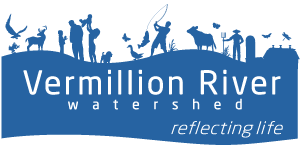Go Green with Wetlands
From the Fall/Winter 2021 Dakota County Newsletter
Wetlands may seem like unusable, swampy land to some, but these areas are essential to a healthy environment. They are important for the survival of countless small organisms — insects, worms, snails and leeches — waterfowl like ducks and geese, and plants as they provide food and habitat.
Wetlands also play a big role in protecting land from flooding. They are like natural sponges, storing excess surface water after spring storms or snowmelt, and slowly filtering and releasing water into nearby streams or lakes.
More than half of Minnesota’s wetlands have disappeared since the mid-1880s. Most were drained for farmland, residential and business development, and road expansions. In 2015, the Dakota County Board of Commissioners adopted a policy that prioritizes wetland restoration to improve water quality, prevent flooding and reduce stormwater runoff.
Banking on wetlands
In some cases, draining or removing a wetland is unavoidable due to a road project or other important county work. Before a project begins, the county thoroughly evaluates the wetland site using expert guidance from the Dakota County Soil and Water Conservation District. The county avoids wetlands whenever possible. If we can’t avoid it, we minimize the disruption of soil and vegetation, and when a wetland is lost, we replace it.
One way to lessen the impact of removing a wetland is by earning ‘credits’ — restoring a lost wetland and banking those credits for a construction project that requires wetland removal. For example, the county recently completed two wetland projects. They provided credits that can be applied toward a future county project where wetland acreage is lost. This approach makes the county’s wetlands permits more cost-effective for taxpayers and ensures wetland replacement occurs within the county.
To learn more about Dakota County’s effort to protect wetlands, visit www.dakotacounty.us, search wetlands.
Become a citizen scientist
You can help research and protect wetlands in Dakota County.
The Wetland Health Evaluation Program (WHEP) is a volunteer-led effort to monitor the health of wetlands throughout the county.
WHEP volunteers collect samples from wetlands to identify living organisms and plants. The data collected helps understand how land use changes, such as construction or development, and stormwater runoff affect wetlands.
Volunteers groups are located throughout Dakota County, including Apple Valley, Burnsville, Eagan, Farmington, Hastings, Lakeville, Mendota Heights, Rosemount, South St. Paul and West St. Paul. No experience is necessary, and training is provided.
If you are interested in volunteering with WHEP, visit www.dakotacounty.us, search volunteer.


